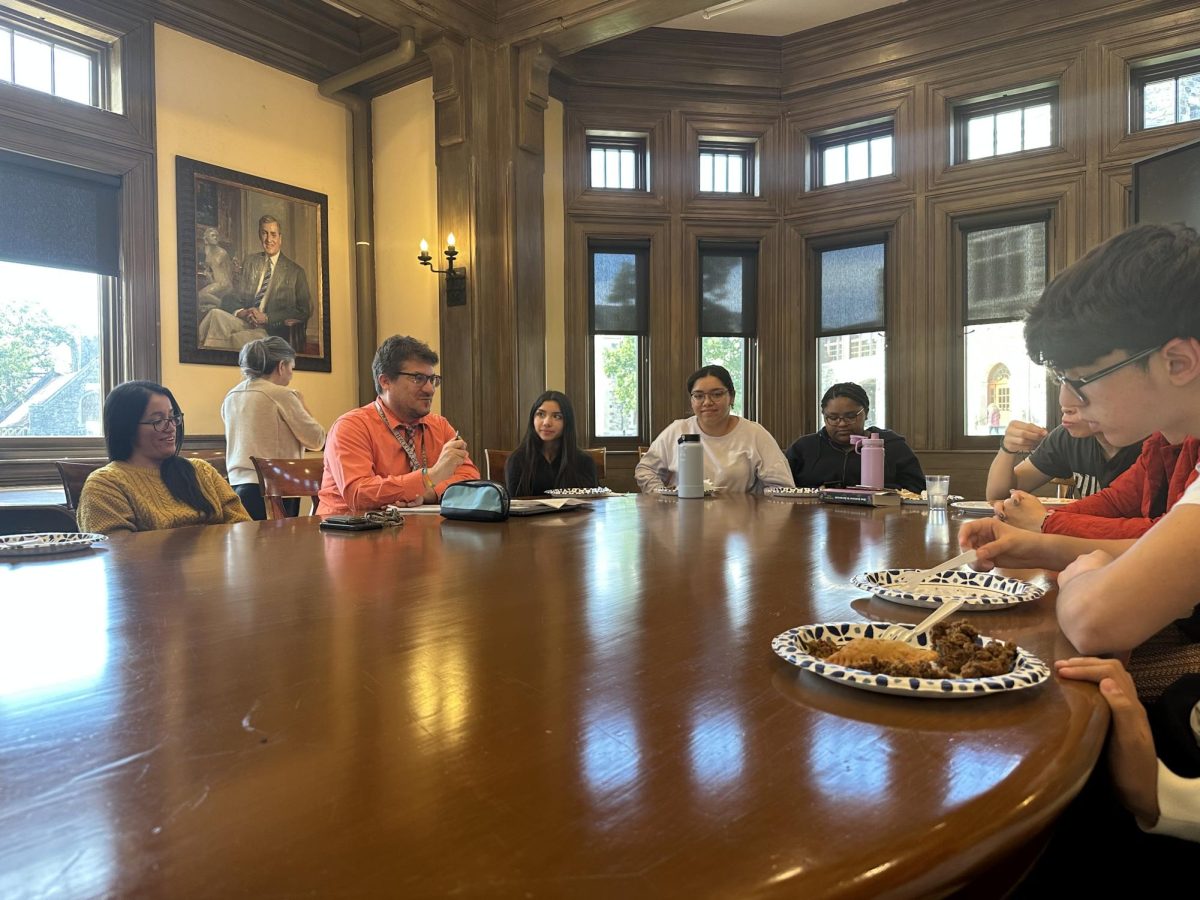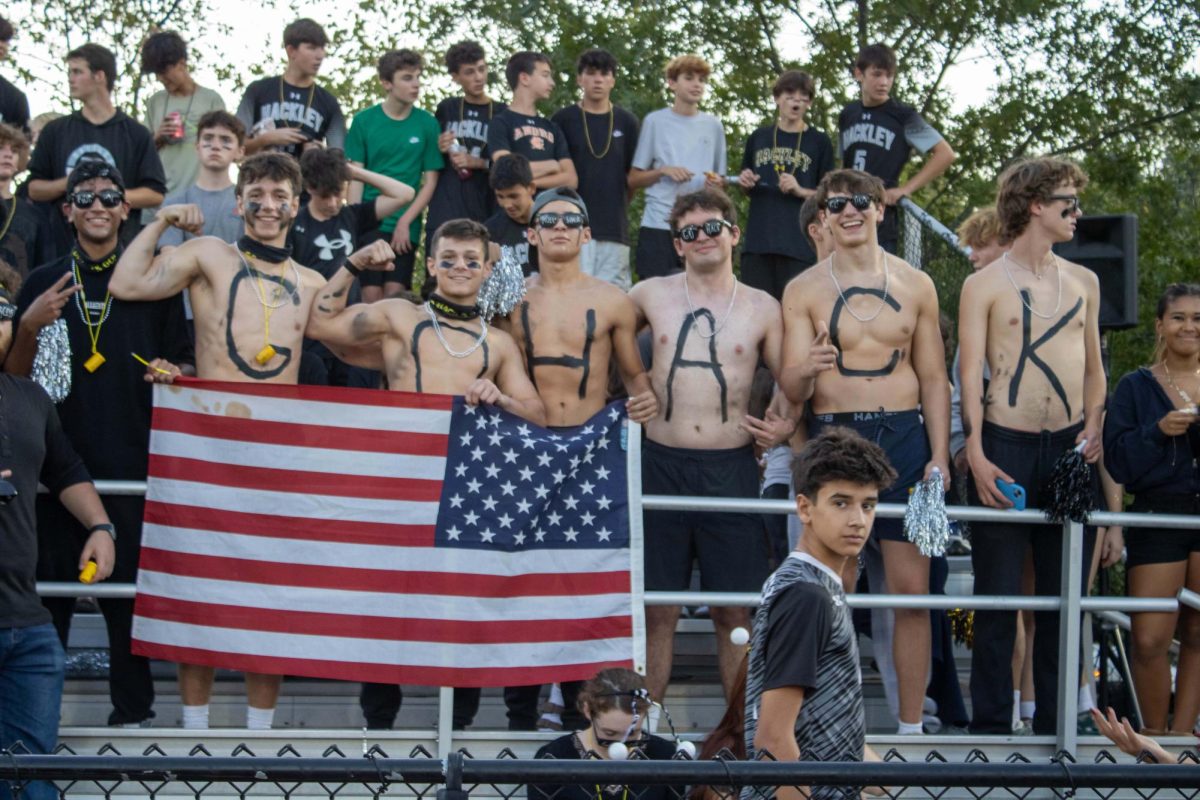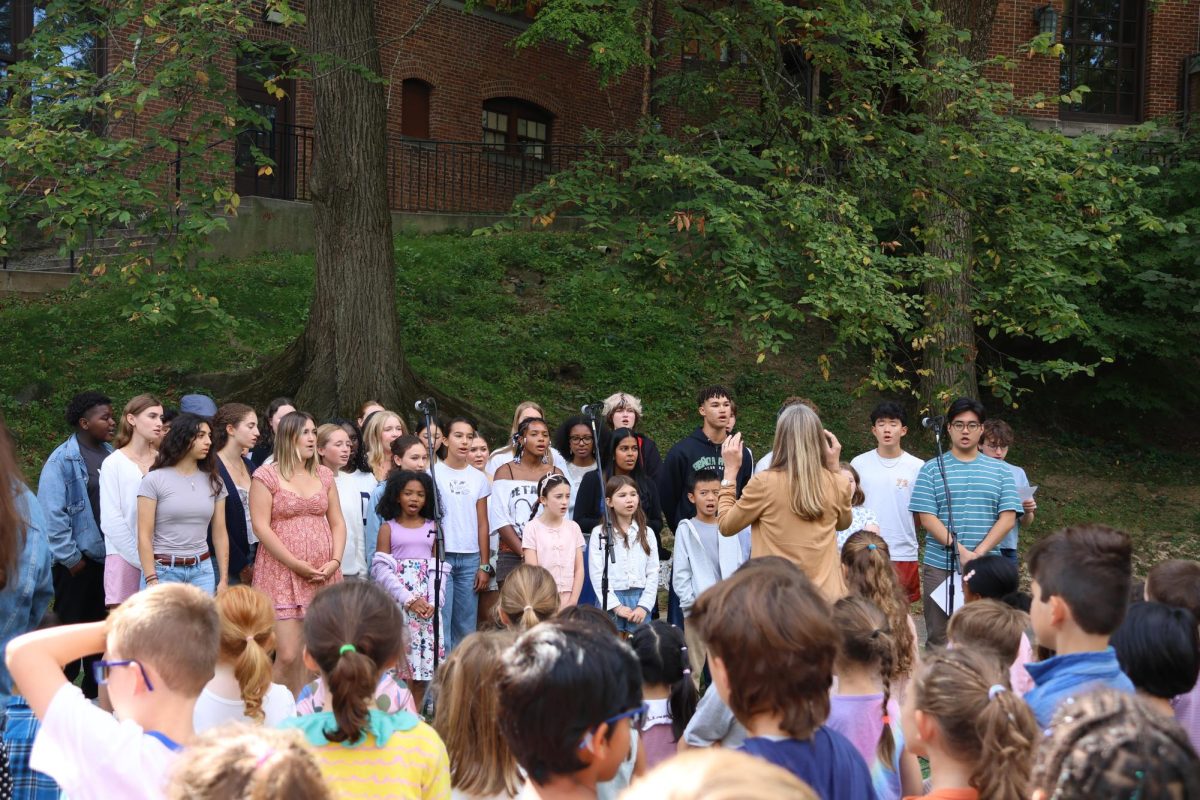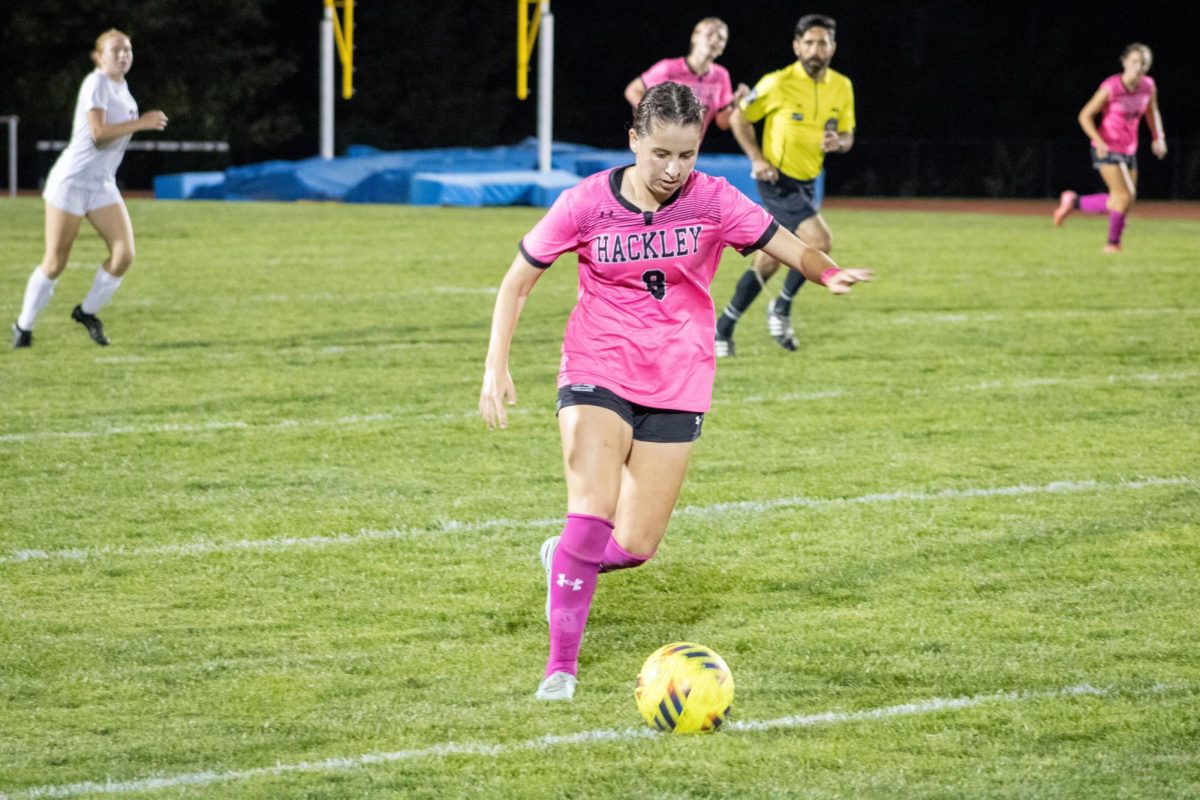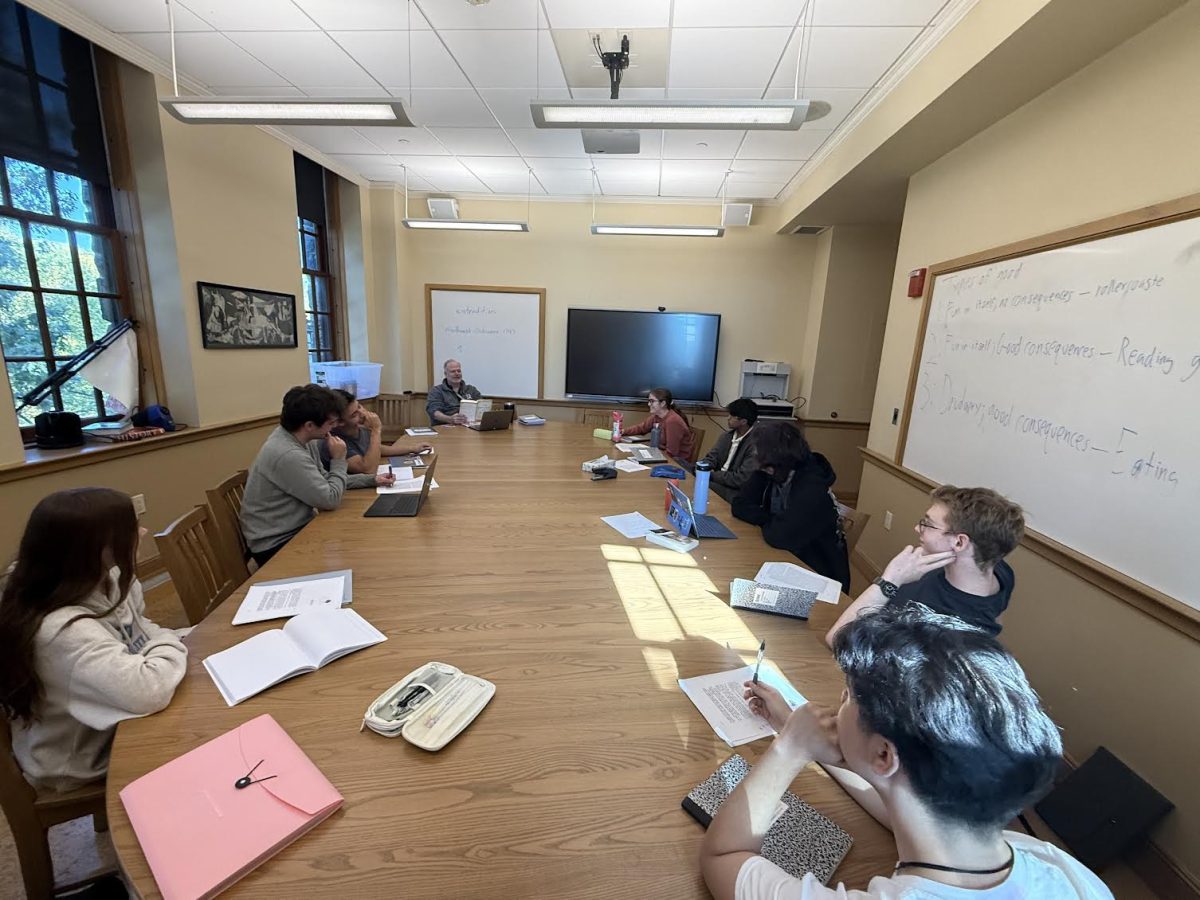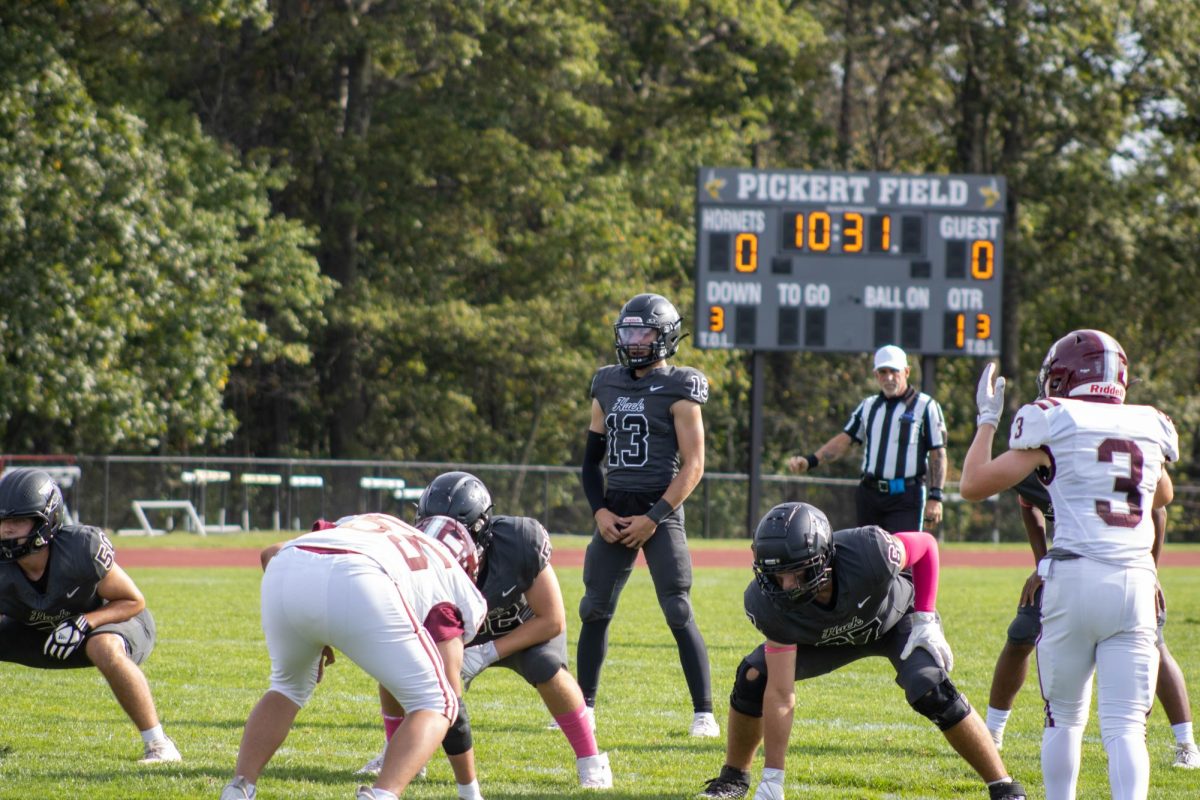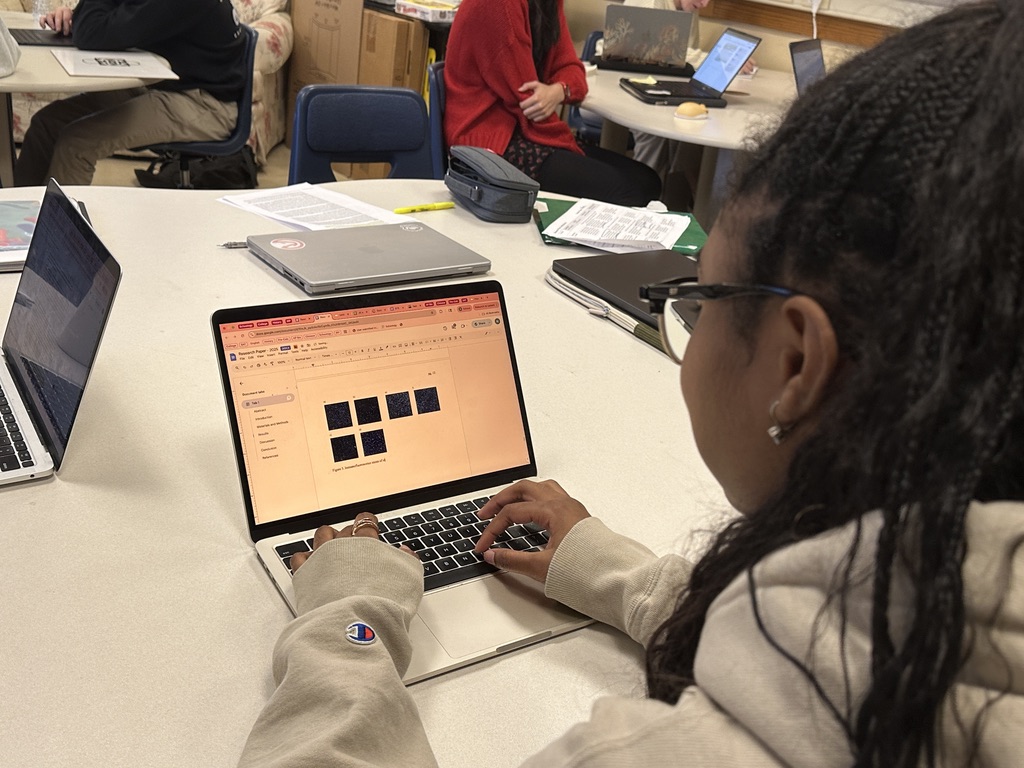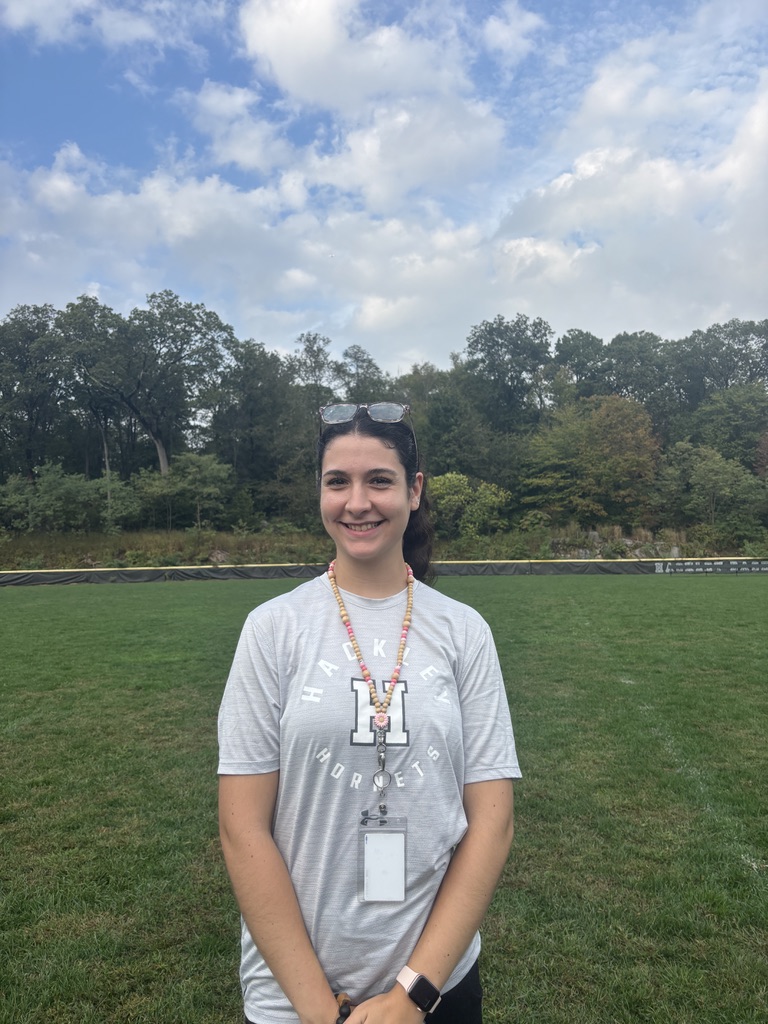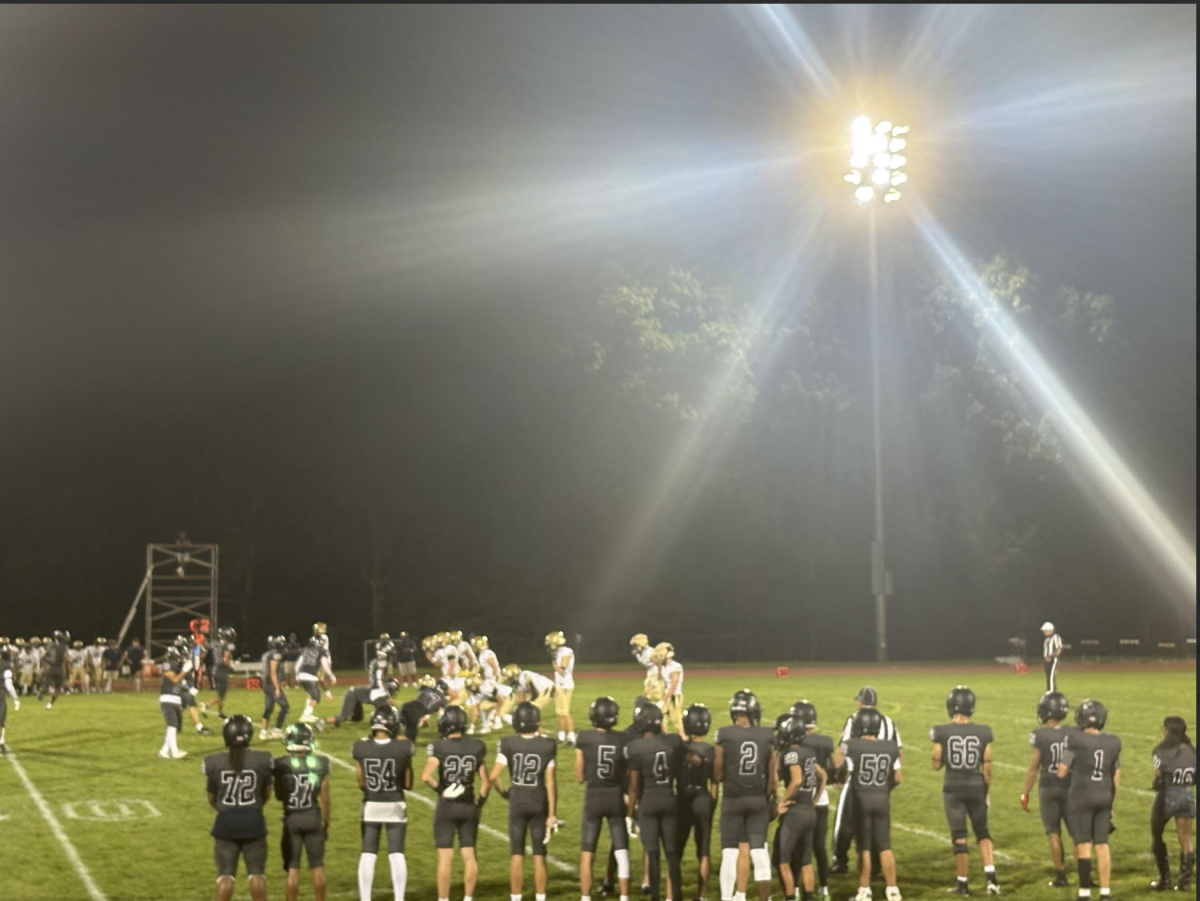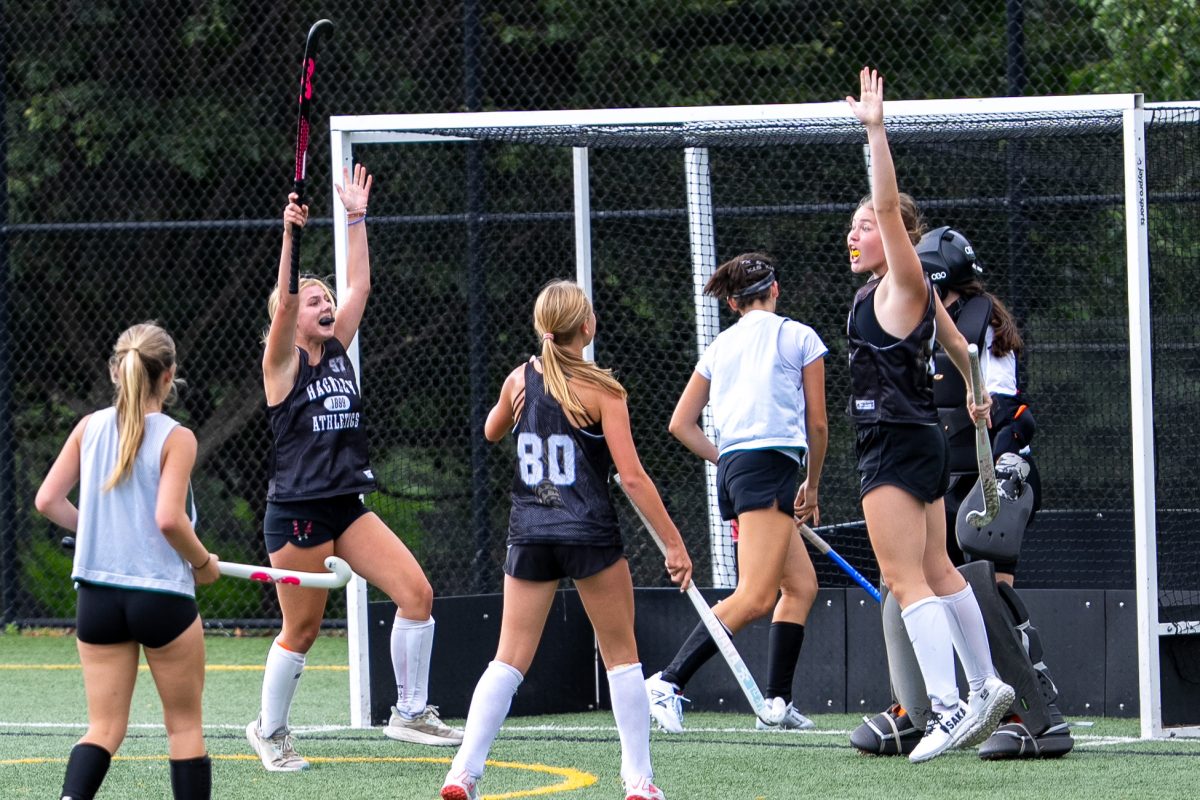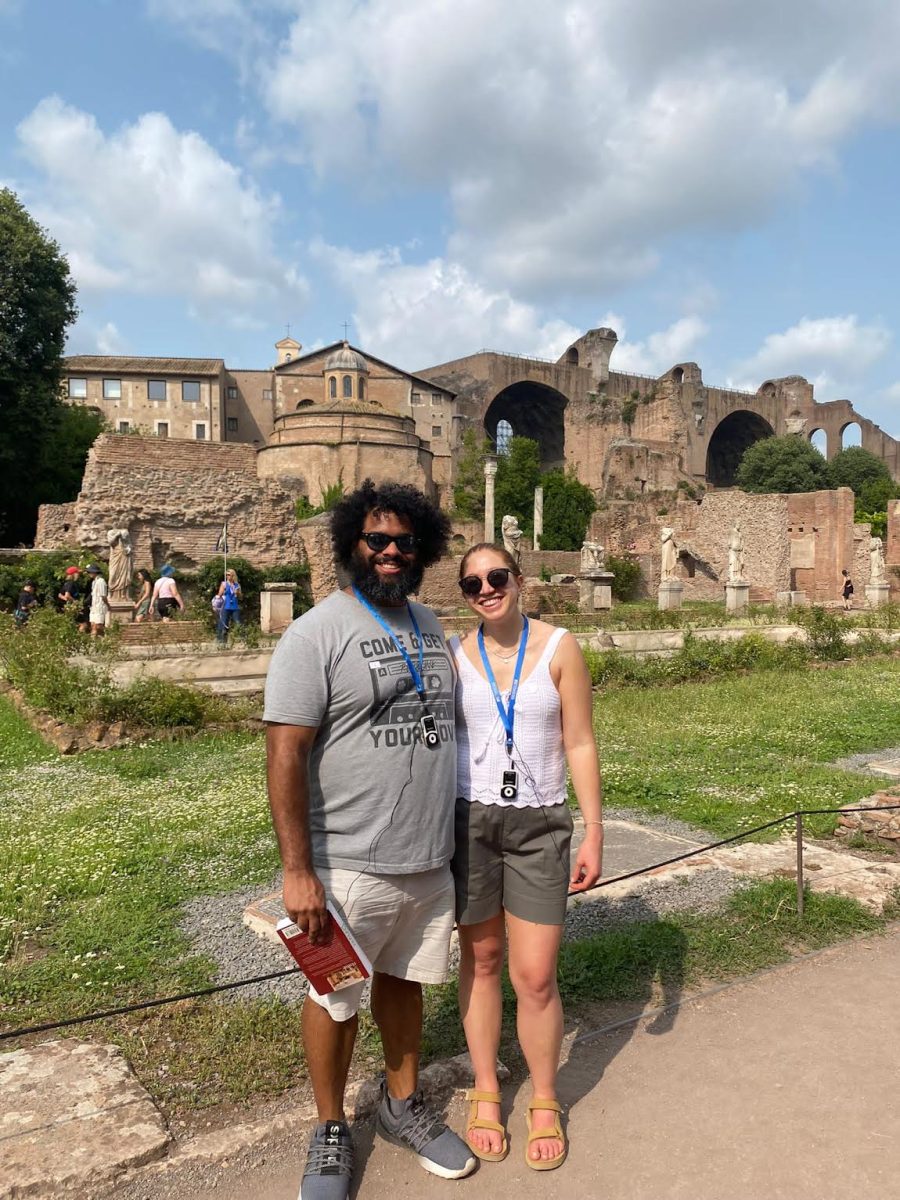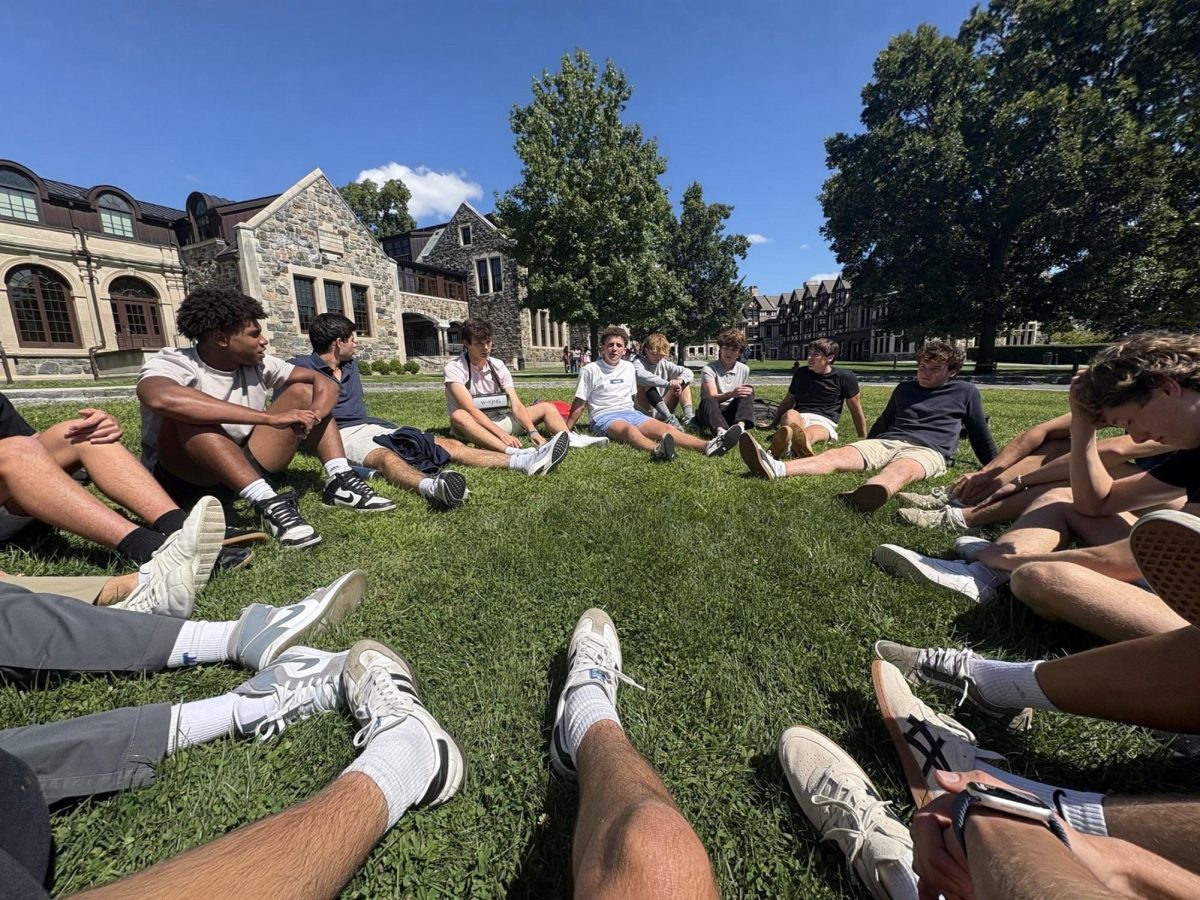¡Feliz mes de la Herencia Hispana! The first roundtable for Hispanic Heritage Month took place on October 11th and celebrated what it means to be a Latine. With plenty of delicious food like empanadas and plantains to go around, everyone took a seat at the table and got ready to discuss the main theme of the discussion, joy!
At the beginning of the roundtable, Dr. Sosa, head of the language department, introduced all of the students and teachers who would be partaking in the discussion. He began to talk about the term latino/a, and the significance that it holds to the community and the world. Throughout the conversation, multiple questions were asked to the table regarding this celebratory month, starting with: Why do we celebrate the Hispanic and Latinx communities in the US?
Regarding this question, Junior Lilo Haidara said, “It’s important to celebrate because it is easy to forget and overlook the contribution that Latinx people are making to society. Acknowledging them is incredibly important because they don’t always gain the recognition that they deserve.”
Some of the important factors that were brought up in the discussion are the feelings of family and love that the Latinx community brings to them. Multiple speakers spoke about the food, music, and traditions that they have with their families and the things that they love most about being a part of this community. They talked about how deep their family history and background go, and that having this helps them form strong relationships and bonds in the community.
Other points that were brought up in the discussion were some of the common misconceptions about the Latinex community. Many people talked about the idea that as a Latino/a, you must be able to read and write Spanish even though this is not always the case. They spoke about how speaking some Spanish at home is completely different from learning how to read and write Spanish fluently. Additionally, they talked about the physical appearance of how a Latino/a is “supposed to look”.
Junior Samantha Reyes said, “Physically there are misconceptions on how a Latino/a person looks. People immediately try to categorize you based on the color of your skin, but most of the time everyone is from a different area and we are all different.”
Later on in the conversation, Dr. Sosa brought up how there is no one Latino experience. He asked the speakers and those at the table in what ways one can still stay connected with these different experiences. Many people talked about how identifying with a culture does not mean you believe in all of the values. They spoke on how you can inherit certain values and traditions and still be connected to your Latino/a heritage.
“There is so much individualism inside of the culture,” sophomore Alessandro Soto said. “You can have so many different types of Latinos but still always have that connection to your Hispanic roots.”
To wrap the whole roundtable up, Dr. Sosa asked people to now look towards the future and what are some challenges that the community is still facing. One thing that was brought up was the representation of the Latinx community and how the media portrays it. They expressed how the media often only shows the flaws and bad sides of their countries rather than what makes it beautiful. Looking towards the future, they spoke about how it is important to share stories and represent what it means to be a part of the community and all that comes with it.

